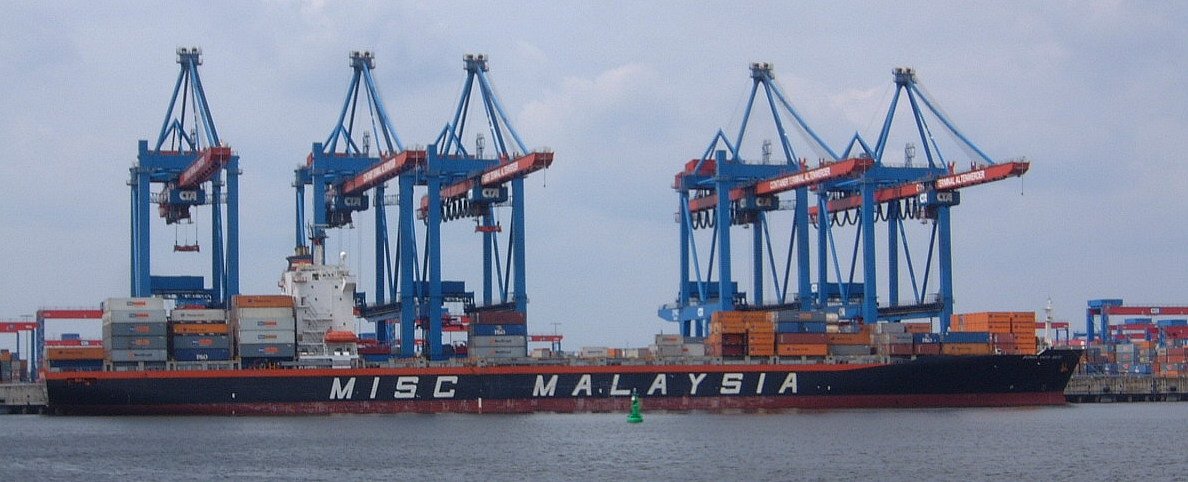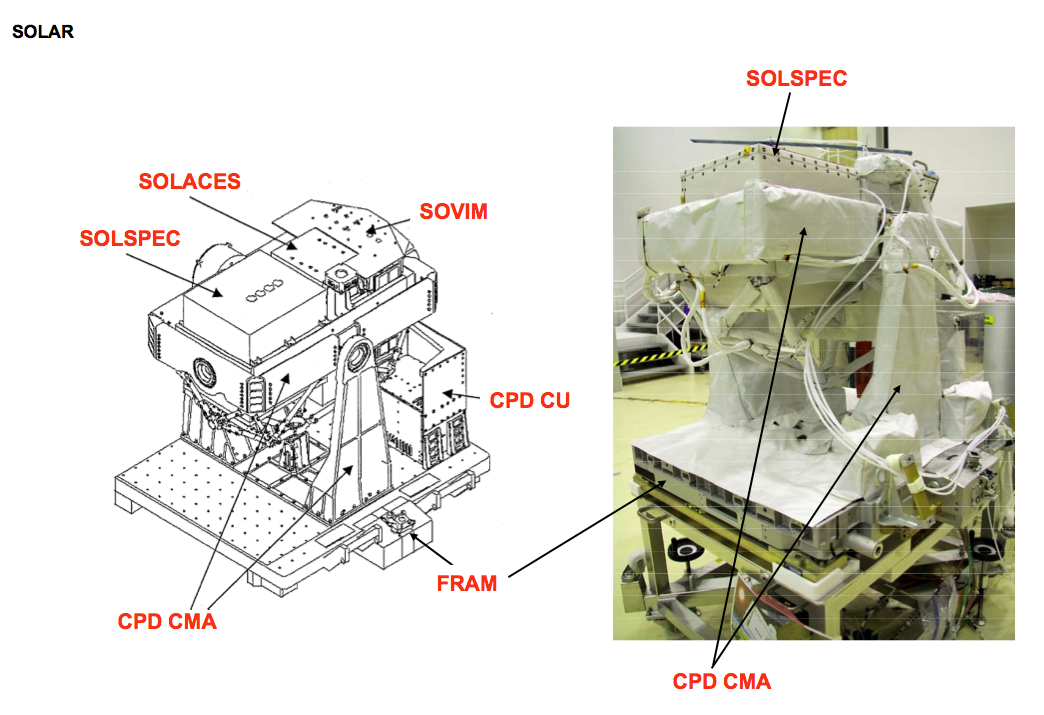|
Columbus External Payload Facility
The ''Columbus'' External Payload Facility (Columbus-EPF) is a component of the European ''Columbus (ISS module), Columbus'' module on the International Space Station, International Space Station (ISS). It consists of two identical L-shaped consoles attached to the starboard cone of ''Columbus'' in the zenith (top) and nadir (bottom) positions, each supporting two platforms for external payloads or payload facilities. Four external payloads (payload facilities) can be operated at the same time. An additional external payload platform called ''Bartolomeo'' was installed on Columbus in 2020. History Columbus-EPF was transported to the International Space Station (ISS) with the ''Columbus'' module on STS-122, STS-122/1E in February 2008. Columbus-EPF payloads and payload facilities are transported to and from orbit using a carrier supplied by the ISS Program. The payloads and payload facilities are manoeuvred by the robotic manipulators of the ISS to their final operational loca ... [...More Info...] [...Related Items...] OR: [Wikipedia] [Google] [Baidu] |
Columbus Module As Seen After STS-134 Undocking (S134-E-010585)
Columbus is a Latinized version of the Italian surname "''Colombo (surname), Colombo''". It most commonly refers to: * Christopher Columbus (1451–1506), the Italian explorer * Columbus, Ohio, the capital city of the U.S. state of Ohio * Columbus, Georgia, a city in the U.S. State of Georgia Columbus may also refer to: Places Extraterrestrial * Columbus (crater), a crater on Mars * Columbus (ISS module), ''Columbus'' (ISS module), the European module for the International Space Station * Columbus (spacecraft), ''Columbus'' (spacecraft), a program to develop a European space station 1986–1991 Italy * Columbus (Rome), a residential district United States * Columbus, Arkansas * Columbus, Georgia, the 119th-most populous city in the United States, and the 2nd-largest in Georgia after Atlanta * Columbus, Illinois * Columbus, Indiana, known for modern architecture * Columbus, Kansas * Columbus, Kentucky * Columbus, Minnesota * Columbus, Mississippi * Columbus, Missouri * Columbus, ... [...More Info...] [...Related Items...] OR: [Wikipedia] [Google] [Baidu] |
Ka-band
The Ka band (pronounced as either "kay-ay band" or "ka band") is a portion of the microwave part of the electromagnetic spectrum. The designation "Ka-band" is from Kurz-above, which stems from the German word ''kurz,'' meaning "short". There is no standard definition of Ka-band. IEEE Standard letter designations for Radar Bands define the nominal frequency range for Ka band in the range 27–40 gigahertz (GHz) in Tables 1 and 2 of IEEE Standard 521 i.e. wavelengths from slightly over one centimeter down to 7.5 millimeters. The ITU however approves Ka-band satellite networks in the 17.3-31 GHz frequency range, with most Ka-band satellite networks having uplinks in the 27.5–31 GHz and downlinks in the 17.7–21.2 GHz range. The band is called Ka, short for "K-above" because it is the upper part of the original (now obsolete) NATO K band, which was split into three bands because of the presence of the atmospheric water vapor resonance peak at 22.24 G ... [...More Info...] [...Related Items...] OR: [Wikipedia] [Google] [Baidu] |
EXPORT
An export in international trade is a good produced in one country that is sold into another country or a service provided in one country for a national or resident of another country. The seller of such goods or the service provider is an ''exporter''; the foreign buyer is an '' importer''. Services that figure in international trade include financial, accounting and other professional services, tourism, education as well as intellectual property rights. Exportation of goods often requires the involvement of customs authorities. Firms For any firm, Global expansion strategies may include: * Franchising, * Turn Key Project, * Export, * Joint Venture, * Licensing, * Creating an owned subsidiary, * Acquisition, * Merger, etc. Exporting is mostly a strategy used by product based companies. Many manufacturing firms begin their global expansion as exporters and only later switch to another mode for serving a foreign market. Barriers There are four main types of expo ... [...More Info...] [...Related Items...] OR: [Wikipedia] [Google] [Baidu] |
High Definition Earth Viewing Cameras
High Definition Earth Viewing (HDEV) cameras were a payload package delivered to the International Space Station on the SpaceX CRS-3 Mission, launched on April 18, 2014. The High-Definition Earth Viewing camera suite was carried aboard the Dragon spacecraft and is configured on a platform on the exterior of the European Space Agency's Columbus laboratory module. It was the first large unpressurized NASA experiment to be assigned for delivery to the International Space Station by SpaceX. The system is composed of four commercial high definition video cameras which were built to record video of the Earth from multiple angles by having them mounted on the International Space Station. The cameras streamed live video of Earth to be viewed online and on NASA TV on the show Earth Views. Previously-recorded video now plays in a continuous loop on public streaming sites. The HDEV system was developed by engineers at the Johnson Space Center in Houston, Texas. High school students also he ... [...More Info...] [...Related Items...] OR: [Wikipedia] [Google] [Baidu] |
Space Debris Sensor
Space is a three-dimensional continuum containing positions and directions. In classical physics, physical space is often conceived in three linear dimensions. Modern physicists usually consider it, with time, to be part of a boundless four-dimensional continuum known as ''spacetime''. The concept of space is considered to be of fundamental importance to an understanding of the physical universe. However, disagreement continues between philosophers over whether it is itself an entity, a relationship between entities, or part of a conceptual framework. In the 19th and 20th centuries mathematicians began to examine geometries that are non-Euclidean, in which space is conceived as '' curved'', rather than '' flat'', as in the Euclidean space. According to Albert Einstein's theory of general relativity, space around gravitational fields deviates from Euclidean space. Experimental tests of general relativity have confirmed that non-Euclidean geometries provide a better model for ... [...More Info...] [...Related Items...] OR: [Wikipedia] [Google] [Baidu] |
SOLAR (ISS)
SOLAR was an ESA science observatory on the Columbus Laboratory, which is part of the International Space Station. SOLAR was launched with Columbus in February 2008 aboard STS-122. It was externally mounted to Columbus with the European Technology Exposure Facility (EuTEF). SOLAR has three main space science instruments: SOVIMSOLSPECand SOL-ACES. Together they provide detailed measurements of the Sun's spectral irradiance. The SOLAR platform and its instruments are controlled from thBelgian User Support and Operations Centre(B.USOC), located at thBelgian Institute for Space Aeronomy(BISA) in Uccle, Belgium. Instruments *SOVIM (''So''lar ''V''ariability and ''I''rradiance ''M''onitor) instrument is based on an earlier instrument (SOVA) which flew aboard the European Retrievable Carrier, launched on STS-46 in 1992. It is designed to measure solar radiation with wavelengths from 200 nanometers - 100 micrometers. This covers near-ultraviolet, visible and infrared areas of the ... [...More Info...] [...Related Items...] OR: [Wikipedia] [Google] [Baidu] |
ISS-RapidScat
ISS-RapidScat was an instrument mounted to the International Space Station ''Columbus'' module that measured wind speeds. It was launched aboard SpaceX CRS-4 in September 2014 and operated until August 2016. ISS-RapidScat was a scatterometer designed to support weather forecasting by bouncing microwaves off the ocean's surface to measure wind speed via wind waves. It featured a rotating radar dish that operated at 13.4 GHz ( Ku band). It could collect data between 51.6 degrees north and south latitude, with a swath . The ISS-RapidScat program was initiated in response to the failure of the QuikSCAT satellite's antenna rotation mechanism in November 2009. While the spacecraft continued to function, it could only gather data in one direction, significantly limiting its data collection ability. ISS-RapidScat was built by the Jet Propulsion Laboratory from elements of QuikSCAT's SeaWinds instrument engineering model, originally used to validate that instrument's flight ha ... [...More Info...] [...Related Items...] OR: [Wikipedia] [Google] [Baidu] |
European Technology Exposure Facility
The European Technology Exposure Facility (EuTEF) was a payload mounted on the exterior of the European ''Columbus'' laboratory, one of the modules of the International Space Station. The facility, mounted onto the exterior of ''Columbus'', provided a platform for multiple types of experiments and materials to be exposed directly to the harsh space environment. The EuTEF is a programmable, multifunctional architecture that provides uniform interfaces for instruments. Nine instrument modules are accommodated and operated simultaneously. Each experiment is mounted on the ''Columbus'' External Payload Adapter (CEPA), which consists of an adapter plate, the Active Flight Releasable Attachment Mechanism (A-FRAM) and the connectors & harness. The experiments are mounted either directly onto the adapter plate or a support structure that elevates them for optimum exposure to the ram (direction of flight) and zenith directions. In total, the facility has a mass of . The first set of exp ... [...More Info...] [...Related Items...] OR: [Wikipedia] [Google] [Baidu] |
Materials International Space Station Experiment
The Materials International Space Station Experiment (MISSE) is a series of experiments mounted externally on the International Space Station (ISS) that investigates the effects of long-term exposure of materials to the harsh space environment. The MISSE project evaluates the performance, stability, and long-term survivability of materials and components planned for use by NASA, commercial companies and the United States Department of Defense, Department of Defense (DOD) on future Low Earth Orbit, low Earth orbit (LEO), synchronous orbit and interplanetary spaceflight, interplanetary space missions. The Long Duration Exposure Facility (LDEF), which was retrieved in 1990 after spending 68 months in LEO, revealed that space environments are very hostile to many spacecraft materials and components. Atomic oxygen, which is the most prevalent atomic species encountered in low earth orbit, is highly reactive with plastics and some metals, causing severe erosion. There is also extreme ul ... [...More Info...] [...Related Items...] OR: [Wikipedia] [Google] [Baidu] |
Atomic Clock Ensemble In Space
Atomic may refer to: * Of or relating to the atom, the smallest particle of a chemical element that retains its chemical properties * Atomic physics, the study of the atom * Atomic Age, also known as the "Atomic Era" * Atomic scale, distances comparable to the dimensions of an atom * Atom (order theory), in mathematics * Atomic (coffee machine), a 1950s stovetop coffee machine * Atomic (cocktail), a champagne cocktail * ''Atomic'' (magazine), an Australian computing and technology magazine * Atomic Skis, an Austrian ski producer Music * Atomic (band), a Norwegian jazz quintet * ''Atomic'' (Lit album), 2001 * ''Atomic'' (Mogwai album), 2016 * ''Atomic'', an album by Rockets, 1982 * ''Atomic'' (EP), by , 2013 * "Atomic" (song), by Blondie, 1979 * "Atomic", a song by Tiger Army from '' Tiger Army III: Ghost Tigers Rise'' See also * * * Atom (other) * Atomicity (database systems) * Atomism, philosophy about the basic building blocks of reality * Atomic ... [...More Info...] [...Related Items...] OR: [Wikipedia] [Google] [Baidu] |
Atmosphere-Space Interaction Monitor
Atmosphere-Space Interactions Monitor (ASIM) is a project led by the European Space Agency to place cameras and X-ray/γ-ray detectors on the International Space Station to observe the upper atmosphere in order to study sprites, jets and elves and terrestrial gamma-ray flashes in connection with thunderstorms. It is hoped that measurements of these phenomena from space will contribute to the understanding of Earth's upper atmosphere. The ASIM components, originally planned to be completed in 2014, were launched on 2 April 2018 and mounted on the ''Columbus'' External Payload Facility on 13 April 2018. Danish tech company Terma A/S is running the technical part of the project for ESA and DTU Space (''National Space Institute'') from the Technical University of Denmark provides the scientific leadership of the project. Mission operations will be performed by the Belgian User Support and Operations Centre (B.USOC) in Uccle, Belgium. First results from the measurements revealed th ... [...More Info...] [...Related Items...] OR: [Wikipedia] [Google] [Baidu] |





